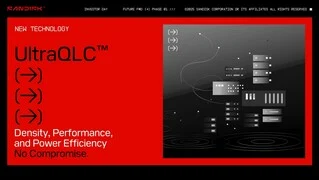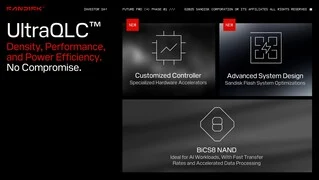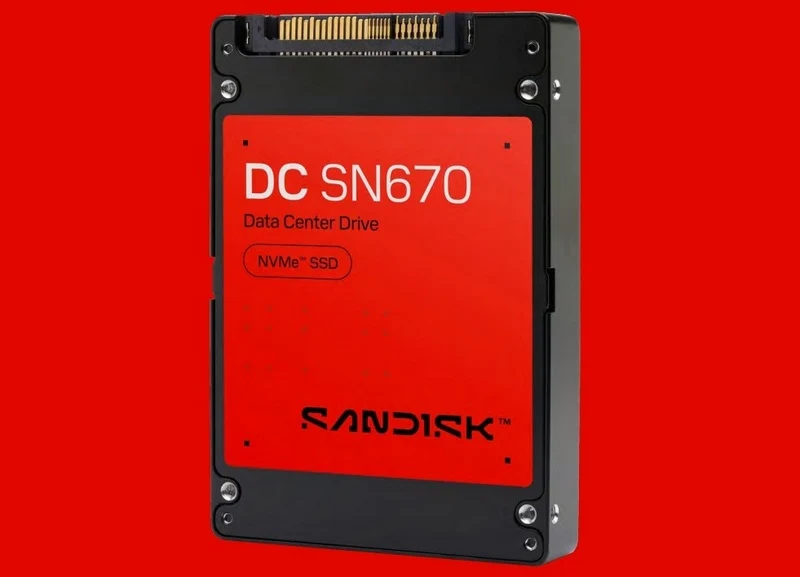Key Takeaways
1. SanDisk plans to develop solid-state drives (SSDs) with capacities up to 1 petabyte (1PB) using UltraQLC technology.
2. UltraQLC integrates Kioxia’s BICS 8 3D QLC NAND memory with a proprietary controller featuring 64 NAND channels for improved performance.
3. The controller includes hardware accelerators that enhance storage functions, resulting in lower latency and higher reliability.
4. Initial UltraQLC SSDs will use 2-terabit NAND memory chips, enabling capacities up to 128TB, with future plans for 256TB, 512TB, and 1PB.
5. SanDisk emphasizes the design’s focus on density, performance, and power efficiency to meet modern data infrastructure needs.
At a recent Investor Day, SanDisk shared its grand plans to create solid-state drives (SSDs) with astonishing capacities reaching up to 1 petabyte (1PB = 1,024TB). These innovative drives will utilize the company’s cutting-edge UltraQLC technology. Although they provided an exciting overview of these high-capacity drives, SanDisk didn’t mention when we can expect to see them on the market.
Details on UltraQLC
UltraQLC isn’t exactly a new type of memory. Instead, it’s an integrated platform that merges Kioxia’s BICS 8 3D QLC NAND memory with a state-of-the-art proprietary controller that boasts an impressive 64 NAND channels and tailored firmware.
The controller plays a crucial role in the system’s performance. It is equipped with domain-specific hardware accelerators that take over essential storage functions usually performed by firmware. This setup leads to lowered latency, heightened throughput, and enhanced reliability in hyperscale storage settings. Moreover, the controller smartly adapts the SSD’s power usage based on the demands of the workload, which helps in maintaining energy efficiency. An advanced bus multiplexer further aids the system by handling the large data flow from the dense 3D QLC NAND memory stacks, ensuring all channels are effectively used without any drop in performance.
Insights from SanDisk’s Leadership
UltraQLC is specially designed based on our years of experience and what we’ve learned lately to be effectively used in modern data infrastructures without sacrificing density, performance, and power efficiency. The design centers on three main aspects: BICS 8 NAND technology and future NAND advancements, customized controllers, and superior system design, explains Khurram Ismail, the new Chief of Engineering and Product Management at SanDisk.
At first, SanDisk’s UltraQLC SSDs will use 2-terabit (2Tb) NAND memory chips, allowing for capacities up to 128TB. While the 64-channel controller is capable of supporting even larger capacities, pushing it too far might affect performance. Looking into the future, SanDisk expects to create higher-capacity NAND devices, paving the way for SSDs that can reach 256TB, 512TB, and ultimately the ambitious goal of 1PB in the upcoming years.
Source:
Link






Leave a Reply